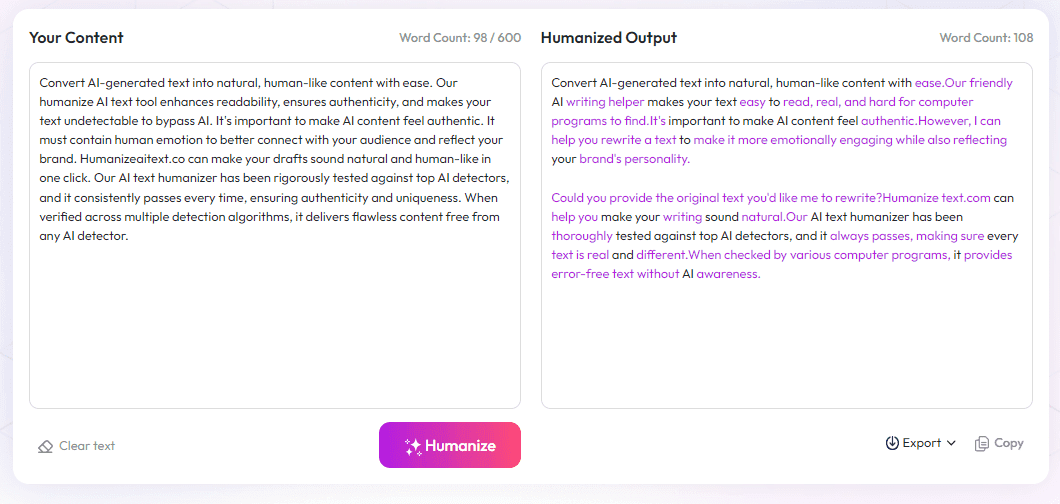Table of Contents
Struggling to get your academic eBook looking just right? You're not alone. Many find formatting a hassle and worry it might ruin their hard work. But don’t worry—we’re here to help you make your eBook neat, consistent, and reader-friendly. Keep reading, and you'll see how simple steps can transform your manuscript into a polished academic piece that’s easy to navigate.
In the next few lines, I’ll walk you through straightforward tips and ideas, so you can confidently format your eBook without breaking a sweat. From setting styles to checking on different devices, I’ve got you covered. By the end, you'll know exactly how to make your academic eBook look professional and ready to share.
Key Takeaways
Key Takeaways
- Start with a clean, well-organized manuscript using styles in Word or Google Docs to keep formatting consistent. Use clear headings and subheadings to structure your content, making navigation easier and enabling automatic table of contents creation.
- Pay attention to paragraph styles: use single or 1.15 line spacing, keep indentation or spacing uniform, and format inline elements like citations and highlights properly. Include images and tables carefully, ensuring quality and clarity across devices.
- Select the appropriate file format—EPUB for flexibility and compatibility across devices or PDF for fixed layouts. Add essential pages like title, copyright, and acknowledgements with consistent styling to give your ebook a professional touch.
- Optimize your ebook for discoverability by using relevant keywords in titles, headings, and descriptions. Write clear, keyword-rich summaries and target your metadata to reach the right readers. Promote on social media and academic platforms.
- Create a straightforward cover and inside layout: use easy-to-read fonts, a clean design, and a professional color scheme. Break long paragraphs, balance whitespace, and test your design on different devices to ensure readability and appeal.
- Choose the best distribution platform based on your goals—consider Amazon KDP, Apple Books, or academic repositories. Use strong metadata and set a competitive price. Promote actively to boost visibility and track your sales to improve future editions.
- Keep your ebook updated regularly, incorporating new information and fixing issues based on feedback. Save version copies, update your metadata, and maintain quality so your work stays relevant and credible over time.

Preparing your manuscript for academic ebook formatting might not sound like the most glamorous part of writing, but it’s the foundation of a professional, reader-friendly digital book. Think of it as setting the stage—clean, consistent, and properly structured—so your content shines across all devices. And yes, this step can make or break whether your readers enjoy or struggle with your work.
The first essential step is to start with a clean, well-organized manuscript. Use a word processor that supports styles (like Word or Google Docs) to apply consistent formatting throughout your document. This includes standardizing fonts, margins, and spacing before you even think about converting your file into an ebook format.
Next, pay attention to how your content is structured with headings and subheadings. Assign each chapter or section a clear heading style—usually something like 'Heading 1' for main titles, 'Heading 2' for sub-sections, and so on. This not only makes your manuscript easy to navigate for readers but also helps generate a clickable table of contents (ToC) automatically during the formatting process. Remember, consistent heading styles are the backbone of a professional ebook and can improve your chances of appearing in featured snippets when your content is well-structured and clear.
Be mindful of your paragraph styles as well. Use single-spacing or 1.15 line spacing for body text—double spacing is often too airy for digital reading and can cause formatting issues. Indent paragraphs uniformly or add space after each paragraph—just stick with one method to keep everything looking tidy. When formatting inline elements like bold, italics, or citations, use appropriate styles to ensure they stand out without clashing with your overall design.
If you’re including images, tables, or embedded elements (like equations or charts), format them correctly within your manuscript. For images, use high-resolution JPEG or PNG files, and embed them inline at the appropriate spots—never just place them as floating objects. Tables should be simplified for digital reading—avoid overly complex grids—and align with your overall style. Properly formatted inline elements, such as citations or hyperlinks, should be consistent and easy to identify for a smooth reading experience. For example, citing a study directly in your text and linking to it with anchor text like “see this authoritative source” boosts credibility and user engagement.
Choosing the right file format from the start is crucial. Most academic ebooks are published in EPUB or PDF formats. EPUBs are flexible and work well across devices like Kindle, iPads, and Android tablets—making them perfect for a wide audience. PDFs, on the other hand, preserve the exact layout—great for print-like quality or fixed-format documents. Both formats have their pros and cons, so selecting the ideal one depends on your target platform and audience preferences. For instance, if you plan to include multimedia or interactive quizzes, EPUB is usually the way to go, whereas PDFs are best for static content.
Finally, remember to include essential pages such as a title page, copyright information, and an acknowledgements page. These can be styled with uniform fonts and centered alignment for a professional look. During the preparation phase, use styles to add a consistent format to your table of contents, ensuring it is generated automatically and accurately links to sections within your ebook. Doing this early in your manuscript setup saves headaches during the later stages of publishing.

9. Optimize Your Ebook for SEO and Discoverability
Getting your academic ebook found by the right audience means paying attention to how it’s optimized for search engines.
Use relevant keywords naturally within your titles, headings, and descriptions to help your ebook appear in search results.
Research popular search terms related to your subject and incorporate them strategically, without keyword stuffing.
Write an engaging, keyword-rich book description that clearly explains what readers will gain—this boosts visibility on platforms like Amazon.
Ensure your metadata, including author tags, categories, and tags, are accurate and targeted to attract the right readers.
Consider adding a glossary of keywords or topics discussed, which can improve your ebook’s ranking in search filters.
Leverage social media and academic forums to share your ebook with hashtags and descriptions optimized for online searches.
10. Create an Effective Cover and Layout for Academic Readers
A clear, professional cover can make a difference in grabbing attention, especially when browsing academic catalogs or online stores.
Use fonts that are easy to read at small sizes and keep your layout simple but polished—think clean lines and organized sections.
Select a color palette that conveys professionalism but also stands out in a crowded digital marketplace.
Design your cover with tools like Canva or Adobe Spark, or hire a designer if needed—just make sure it aligns with your subject matter.
For inside pages, use a consistent font size (11-12pt for body, larger for headings), and balance whitespace to reduce clutter.
Break long paragraphs into shorter ones to make scanning easier for readers, especially in digital formats.
Finally, test your design on different devices to ensure readability across smartphones, tablets, and computers.
11. Submit and Distribute Your Academic Ebook Effectively
Picking the right platform depends on your goals—whether you want wide distribution or targeting a specific niche.
For broad reach, consider options like Amazon Kindle Direct Publishing (KDP), Apple Books, or Google Play Books.
Look into academic repositories or university presses if you want your work in scholarly circles—these often have specialized submission guidelines.
Use metadata and keywords to make sure your ebook appears in relevant searches and catalogs.
Set a competitive price point based on your target audience and market standards, and consider offering freebies or samples to attract readers.
Promote your ebook through social media, email newsletters, and academic networks to boost visibility and downloads.
Track your sales and reviews to understand your audience better and improve future editions or projects.
12. Keep Your Ebook Updated and Maintain Quality Over Time
Especially for academic content, updates are crucial to keep information current and relevant.
Set a schedule for reviewing and updating your ebook with new data, sources, or corrections.
Encourage feedback from readers and colleagues—use their insights to refine content or fix issues.
Update your metadata and marketing materials along with the content to reflect the latest information.
Saving different versions helps you track changes without risking the loss of previous editions.
Maintaining high quality over time builds your reputation as a reliable author and enhances your credibility in academic circles.
This way, your ebook remains a go-to resource and continues to contribute meaningfully to your field.
FAQs
Start by reviewing your manuscript for clarity, remove inconsistencies, and format headings, paragraphs, and images properly. Ensure the content is organized and ready to adapt to digital formats for smooth transition to eBook layout.
Use a style template for headings, subheadings, and body text to keep a uniform appearance. Consistent styles help improve readability and make updating formatting easier throughout the eBook.
PDF is ideal for fixed layouts, while EPUB and MOBI are suitable for reflowable content on various devices. Choose formats based on your distribution platform and reader preferences for best results.
Preview your eBook on multiple devices and screen sizes. Check formatting, images, and navigation to ensure consistent display and readability across computers, tablets, and smartphones.



